
Documentary narrative: David Grann, The Wager : A Tale of Shipwreck, Mutiny and Murder (Doma Publications, translation by Despina Kanellopoulou, p.443)
After the success of his books such as Killers of the Flower Moon and The Lost City of Z, acclaimed American investigative journalist David Grann returns with a documentary that sheds light on unpublished records and sources relating to the shipwreck and subsequent fate of the crew of Her Majesty’s Ship The Wager. Grann, in his familiar narrative style, which straddles the line between journalism and fiction, ultimately delivers the facts in a way that leaves the reader to decide on the “final verdict”.
According to the synopsis, on January 28, 1742, a half-disassembled ship, consisting of thirty disemboweled men, washed up on the coast of Brazil. The men belonged to the crew of the Wager, which was wrecked off Patagonia during a secret expedition. Their accounts of the agony they experienced and the superhuman effort to cross more than 3,000 dangerous nautical miles made them heroes in the eyes of the witnesses. Yet, six months later, a similarly impoverished float washed up on the Chilean coast. The three people on board tell a very different version of the story of the shipwreck: the thirty sailors were not heroes-but mutineers. In the court battle that will follow, the Royal Navy will have the final say: those found guilty will face the death penalty.

Theatre: Agatha Christie, Witness for the Prosecution (Psychogios publications, translation by Antonis Galeos, p.183)
Psychogios Publications has offered the reading audience an abundance of works by the leading British suspense writer. Among the short or long adventures of Hercules Poirot, the author’s skillfully narrated autobiography and the stories of Miss Marple that they have translated into Greek, this year Psychogios Publications enlists the leading theatrical translator of his generation, Antonis Galeos, in order to deliver to lovers of courtroom drama another great masterpiece by Agatha Christie, Witness for the Prosecution.
Adapted by Agatha Christie herself, the play focuses on the struggle of criminal lawyer Sir Wilfred Robarts to prove the innocence of a seemingly innocent young man, Leonard Vole, accused of murdering an elderly wealthy widow. Although his close relationship with the old lady puts him in a rather incriminating position, Sir Robarts suspects that Leonard’s enigmatic wife is hiding a terrifying secret to solve the case. Despite the many characters parading in and out of the courtroom, Agatha Christie manages to convey the ideas and actions of the central characters in vivid detail, demonstrating an intelligent sense of theatricality. The phlegmatic humor and the presentation of archetypal characters (the conscientious lawyer, the femme fatale, the duplicitous lover) make the play timeless and agonizing to its last page.

Album: Alexis Kiritsopoulos, “Parallel”: Retrospective Exhibition, Athens Municipal Gallery (Kedros Publications, p.141)
Alexis Kiritsopoulos is a painter, whose important work is hosted in galleries but mainly the public will recognize him on the covers of Dionysis Savvopoulos’ albums and Stelios Ramphos’ books. The album, published by Kedros Publications, is essentially a companion to the retrospective exhibition of Kiritsopoulos’ work at the Athens Municipal Gallery (9 December 2023-11 February 2024). The art historian Christoforos Marinis, observing Alexis Kiritsopoulos’ drawings, intertwined with light and comic moments, aptly underlines: “By painting ‘the good that exists in things’, Alexis Kiritsopoulos generously gives us smiles, a precious antidote to cynicism and gloom.” The album also includes texts by other friends of the artist, including Dionysis Savvopoulos, Alexandra Koroxenidi, Alekos Levidis, Dimitris Nollas and Stelios Ramphos.
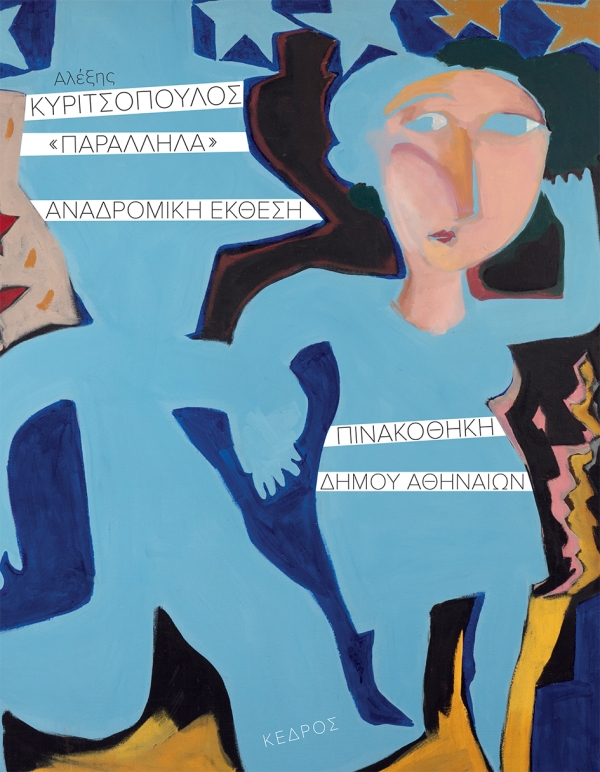
Album: Alexis Kiritsopoulos, Once and Now (Kedros Publications, p. 104)
As Andreas Staikos writes about the new book of sketches by Alexis Kiritsopoulos, in this book “a series of the achievements of the pencil and pen of Alexis Kiritsopoulos is presented, as well as a series of his oblique, yet comforting, gaze. His sketches embrace a temporally broad, as well as turbulent, period, a period of finalization and political and social upheavals at the end of the seven-year dictatorship (1967-1974) and the beginning of the post-dictatorship period. Although that period provided fertile ground and rich raw material for cartoon expression, easy targets for satire, irony, mockery or derision, Alexis Kiritsopoulos, with flexible pretenses, maneuvers and drifts, deviated from the appealing stereotypes and expected certainties of the well-trodden path of current events.”
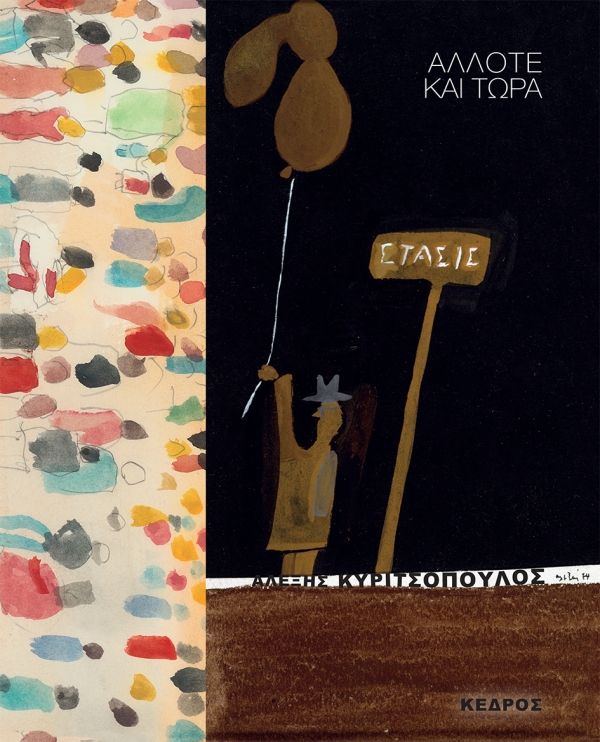
Album: Karen Homer, Little Book of Hermès (Psychogios publications, translation by Irini Paidousi, p. 160)
Companies that have played a leading role in global fashion, that have shaped trends in clothing and beauty, that have a long history and whose products have become a fetish and an object of collector’s value. Hermès could not but be part of the Little Books of Fashion series by Psychogios Publications. The history of the House goes back to 1837 when Thierry Hermès, who manufactured riding gear, bridles and harnesses, vowed to always use the best materials worked by the best craftsmen. Almost two centuries later, Hermes remains true to its founder’s wish.
The sought-after handbags, the silk scarves and the distinctive watch have all played their part in creating the legend. Legendary names in fashion, Martin Marcela, Jean Paul Gauthier, Christophe Lemaire, Nadège Vané-Siboulsky have all put their signature on the House’s products.Unlike competing companies, Hermès remains under the control of the family that founded it, the guardian of high-quality production.

Classic Novel: Joseph Conrad, Heart of Darkness (translation by Margarita Zachariadou, Doma Publications, p. 145)
Heart of Darkness is one of the novels that heralded the modernist movement in literature. Based in part on Joseph Conrad’s images from his overseas travels during the period 1883-1890, it inspired Francis Ford Coppola with the allusive atmosphere of horror surrounding its characters while writing his masterpiece, Apocalypse Now!
Open to multiple interpretations, Conrad’s work approaches issues of obsession, self-awareness, while implicitly criticizing the colonialism of the white man who wishes to impose himself on the depths of Africa. Conrad’s esoteric, enigmatic writing grants Heart of Darkness eternity: “I have struggled with death. It is the most prosaic struggle imaginable. It is fought in an ugly gray, where there is nothing under your feet, nothing around you, no spectators, no tumult, no glory, no great desire to win, no great fear of defeat, only a sickly atmosphere of tepid skepticism, not even much faith in the justice of your struggle, and still less in that of your opponent.” If ultimate wisdom takes this form, then life is even more of an enigma than we think.”

Essay: James Wood, How Fiction Works (translated by Kostas Spatharakis, Antipodes, p. 292)
James Wood, eminent literary critic and professor of literary theory at Harvard, expands on his essay, How Fiction Works, first published in 2008. Drawing inspiration from the writings of Colliridge, Wolfe, and Maddox Ford, he follows a personal authorial path that resembles neither a sterile academic textbook nor a traditional history of literature. Nevertheless, Woods addresses burning questions such as style, point of view, and what is ultimately real within a contemporary literary text.
The greatest asset of this essay is the mixed approach of its author. James Wood operates sometimes with the instincts of a journalist and sometimes by barricading himself behind the “crystal-clear camp of the esthetes” in order to keep the flame for his own search for truth unquenched. Above all, his anxiety for the renewal of critical discourse is discernible, returning to the beginning of everything: that indescribable feeling of youth that for the first time confronts the great literary achievements of humanity.
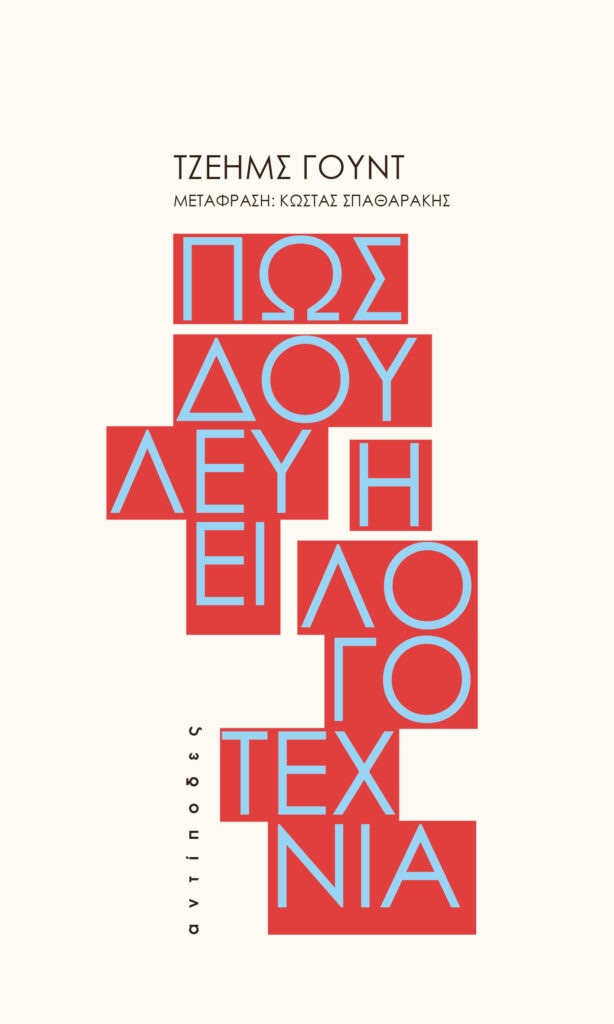
Essay: Max Weber, The Sociology of Music ( Patakis Publications, introduction-editing-translation by Thomas Sliomis, p. 192)
Max Weber, one of the most innovative thinkers of the 20th century, an analyst of societies, economic relations and religion, in this lesser-known study explores the evolution of music through its very materials – scales, instruments, techniques and inventions, in relation to cultural traditions, religions, myths or beliefs. It integrates music and precisely reconstructs it as a social phenomenon into the kind of human activity that is central to the development of culture and ultimately of man himself.
Although “The Sociology of Music” is considered an incomplete work published after Weber’s death, it is a study that forms an integral part of his overall work on society, religion and culture, in which the great thinker illuminates with his own sociological tools the physiology, technique and aesthetic rules of the musical phenomenon.

Essay: Audre Lorde, Sister Outsider (Keimena Publications, translation by Ismini Theodoropoulou, p. 251)
“For women, the need and desire to take care of each other is not pathological but redemptive-and when we realize this, we rediscover our true power. It is this true connection that the world of patriarchy dreads.” Audre Lorde, born in New York City, with Caribbean roots, lived to be just 58 years old. But 58 years was enough to dynamite the foundations of patriarchy through her activism, poetry, essays and lectures.
In this edition, some of the best and most passionate words she addressed to the women in her audiences are anthologized, as well as some excerpts from her diaries. “Black, lesbian, mother, fighter, poet,” in her famous words, her work now occupies a plethora of progressive curricula-particularly in America-while reminding us of the importance of solidarity among the oppressed everywhere and sternly declaring that “The master’s tools will never tear down the master’s house.”
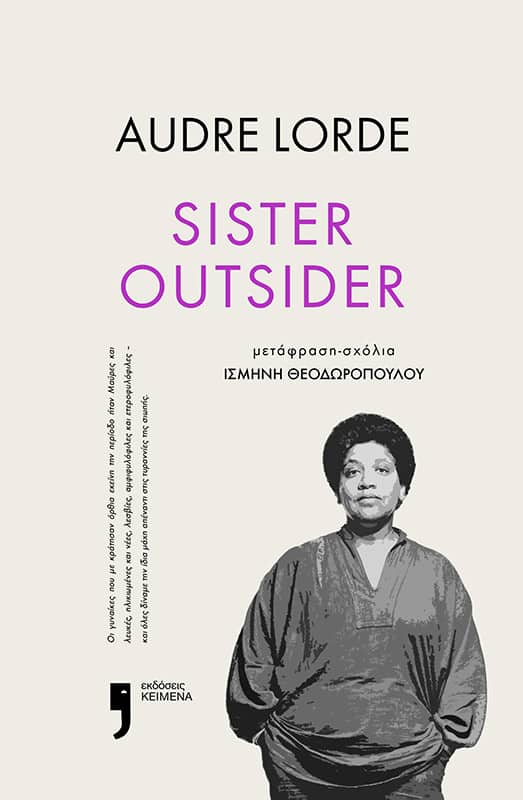
Theatre-Essay: In the Labyrinth, Theodoros Terzopoulos meets Heiner Müller (Keimena Publications, translation by Yannis Kallifatidis, p. 191)
A publication, edited by Frank Raddatz, on the relationship between two of the most important contemporary theatre artists, Theodoros Terzopoulos and Heiner Müller. From being an assistant director to Ingmar Bergman at the Royal Theatre in Stockholm, the young Terzopoulos found himself in 1972 at the Berliner Ensemble, where he began a meaningful and lasting dialogue on tragedy with Müller. According to Theodoros Terzopoulos, their discussions had no formal context (they usually took place privately, at mealtime) and Heiner “never directly addressed intellectual issues, but talked about everyday life or the functioning of the body.”
The work of Terzopoulos, famous for the way that, according to Müller, leads to the “unity of body and text – of speech as a bodily entity”, is best summarized in this volume – a volume that includes aphorisms, sketches by the director and photographs of the Greek artist’s performances.
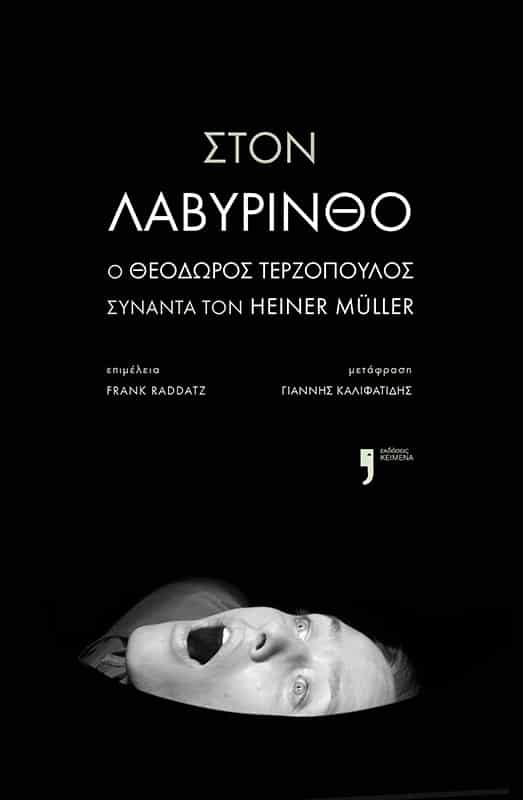
History: Konstantinos P. Vlachos, Relations of the Christian and Jewish Community of Ioannina (I&E Gkani Foundation, Ioannina 2023, p. 30)
A special publication by the Joseph and Esther Gkanis Foundation of Ioannina. The study by Konstantinos P. Vlachos documents the harmonious relations between the Christian and Jewish communities of Ioannina. Ioannina, a predominantly multicultural city that emerged as the epicentre of Romaniote Judaism, embraced the Jewish community-which, with the flourishing of trade and industry in the early 19th century, grew even larger.
Unfortunately, as Nap.Margaris notes in his prologue, “This peaceful and brotherly coexistence was inhumanely interrupted by fascism on 25.03.1944, when 1870 Jewish Romaniotes were uprooted after about 12 centuries and taken to the crematoria of Auschwitz. Among them was Esther Gkani”.
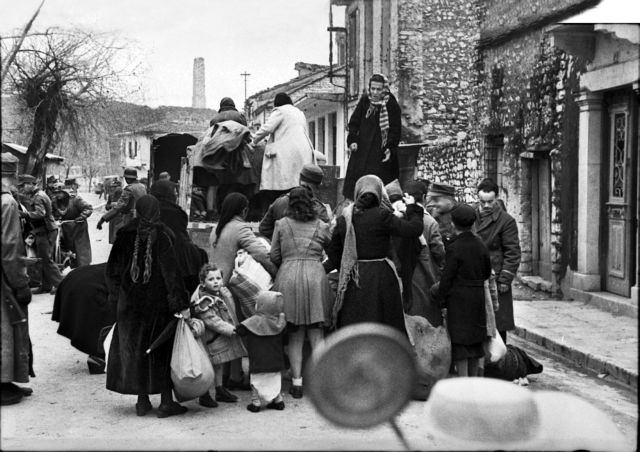
History: Taner Akçam , Losing the Homeland: The Deportations of the Greeks of Asia Minor 1913-1917 (Hestia Publications, translated by Markos Karasarinis, p. 272)
Professor Tanner Akçam is the director of the Armenian Genocide Research Program at the Promise Armenian Institute at UCLA, and his writing focuses on contemporary Turkish history. This research focuses on the forced displacement and ethnic cleansing policies that were implemented to specifically towards the Greek population of Ottoman subjects during the years of the First World War.
Akçam’s most interesting proposal, as articulated by him (translated by Niki Stavridis) is the following: “My suggestion here is, for a proper understanding of the period 1878-1924, to use the term ‘Genocide in the Ottoman state’ or ‘Genocide against Christians’. In this essay my intention is to examine the policies of ethnic cleansing and extermination which were applied against the Greeks of Asia Minor, not as an isolated event but as part of the genocidal process which began in 1878 with the Treaty of Berlin and ended in 1923 with the Treaty of Lausanne.”

History: Elli Yiotopoulou-Sisilianou, The Venetian rule in the Ionian Islands, The case of Corfu (Hestia Publications, p. 287)
Elli Yiotopoulou-Sisilianou is President of the Marangopoulos Foundation for Human Rights and Professor Emeritus of the Ionian University. Her book begins with a question she poses to herself: “why, while in history textbooks, especially in school textbooks, the period of the Turkish occupation is presented in more or less detail, the period of the Venetian occupation in the Ionian Islands is silenced, even though they lasted for almost the same period of time.”
From then on, the author attempts, in four analytical chapters, to analyze the colonial policy of Venice in Greece and to trace its impact on Greek society, institutions, culture, education, defence and economy.

History:Meropi Anastasiadou, The Greeks of Constantinople in the 19th century: Social and Political History of the Community of Pera (Hestia Publications, translation from the French original by N.E.Karapidakis, p. 517)
Meropi Anastasiadou is Professor of Modern History at the National Institute of Oriental Languages and Cultures in Paris. In this work, the author traces the path of the Greek Orthodox community of Pera while trying to identify the “warning signs of the collapse of the imperial edifice”. It is a work that took about fifteen years, with Meropi Anastasiadou studying the parish archives of the period 1804-1923.
In this way, it provides a lot of information about the demographic characteristics of the region, the administrative organization, the elites and the charitable activities. The deeper aim of the study, as the book’s description points out, was “to understand the function and aspirations of the non-Muslim populations of the Ottoman Empire in the era of nationalism.”

Fiction: Maggie Nelson, Bluets (Antipodes Publications, translation by Krystalli Glyniadakis, p. 124)
Maggie Nelson, one of the most restless voices of her generation, was born in 1973 in San Francisco. A prose writer, poet and essayist, her work revolves around issues of violence, gender and sexual identity. In her lyrical essay, “Bluets,” she explores all the shades and connotations of blue, opening a conversation with Goethe, Wittgenstein, Barthes, and ultimately the readership.
Fragmentary, like contemporary life, written in the form of aphorisms, Nelson’s work is distinguished by its thoughtfulness and playfulness: ”I like to tell people that I’m writing a book about blue without actually writing it. In those cases people usually want to give you stories or clues or gifts and so you can play with words.”
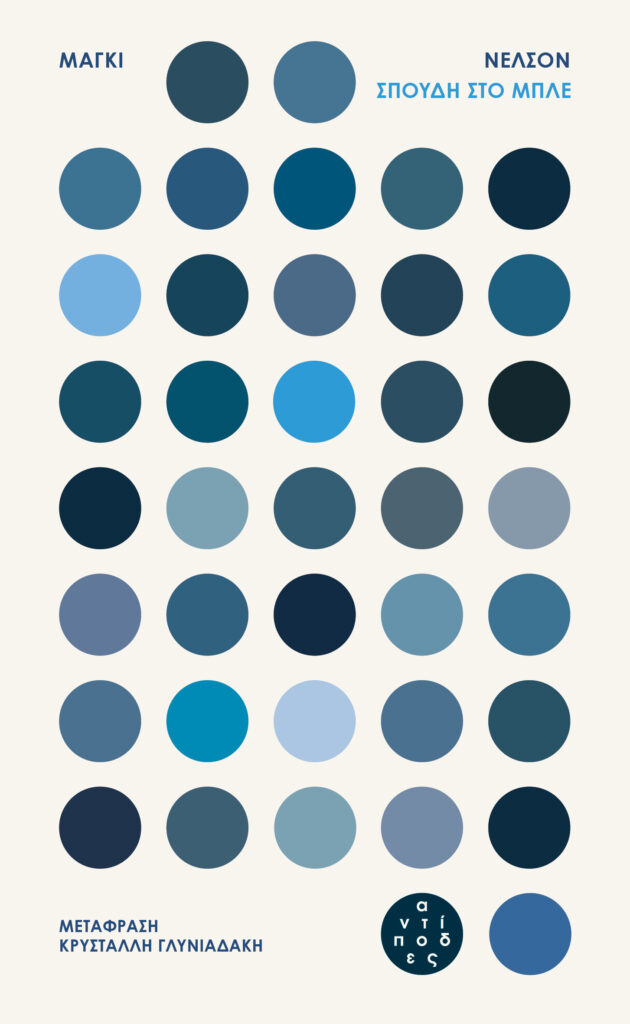
Popular Science: Dimitris Dimitriadis-Giannis Skordas, 2049-Guidelines for the Future of Humanity (Key Books, p.264)
Dimitris Dimitriadis and Yannis Skordas are two leading experts in forecasting technological trends internationally. The former is dedicated to “exploring” the future, an expert in the design of “tomorrow’s” companies and a researcher at the Special Secretariat for Long-Term Planning at the Presidency of the Greek Government.The latter is an economist specializing in the design of sustainable and digital business models. Their book is aimed at those who believe in the uncertainty of the future.
“2049” analyses how big data, artificial intelligence, blockchain and the exponential growth of new technologies are shaping the brave new world, and explains what we need to know today (especially in Communication, Transport/Mobility and Energy) to be prepared for tomorrow.
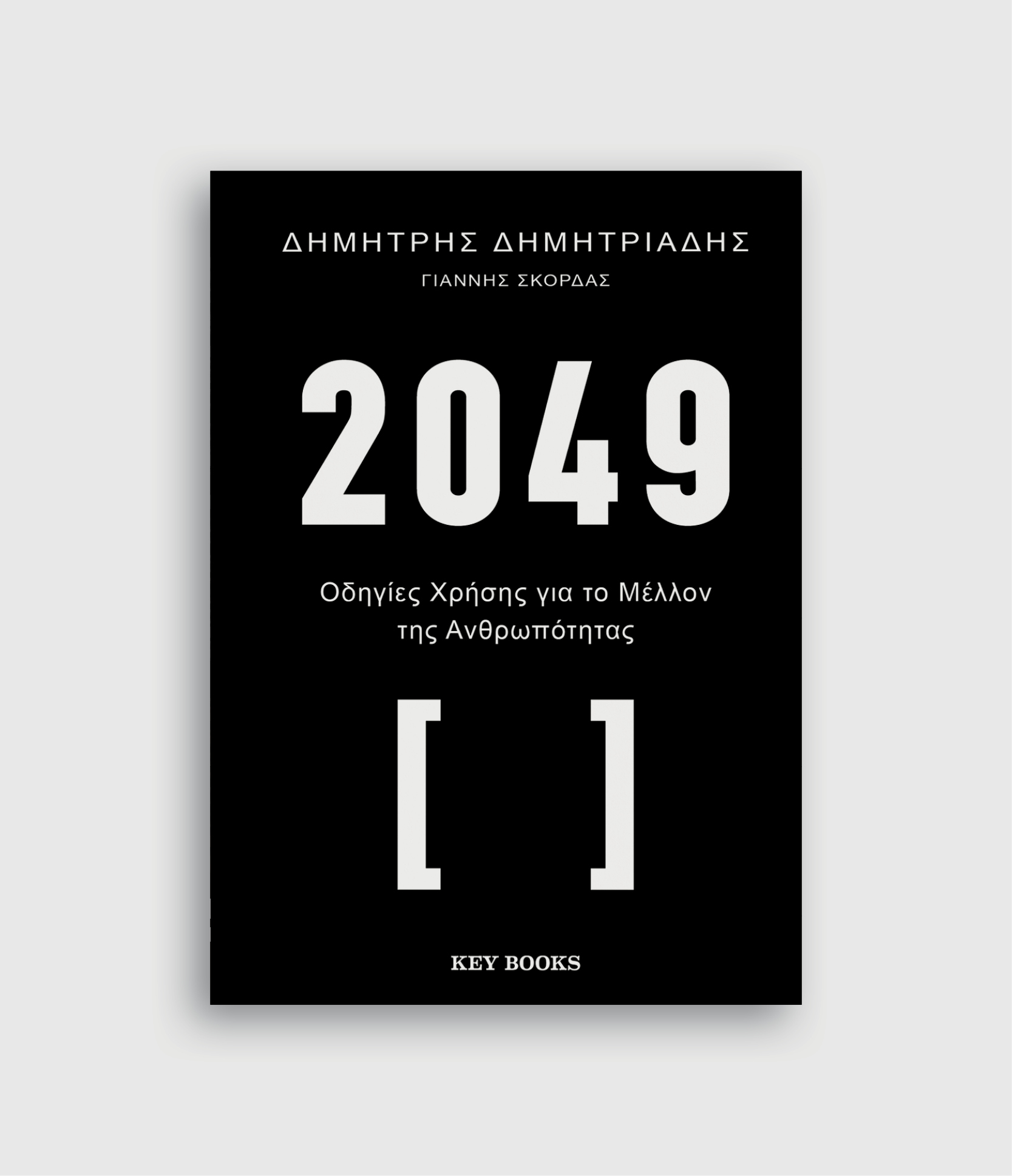



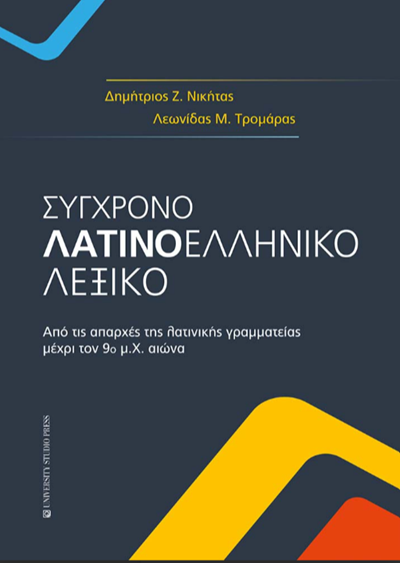
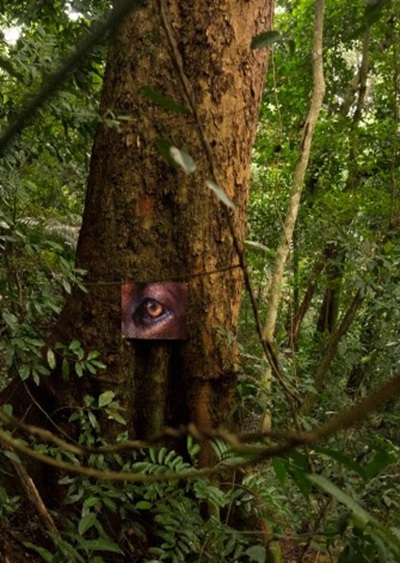


Leave A Comment